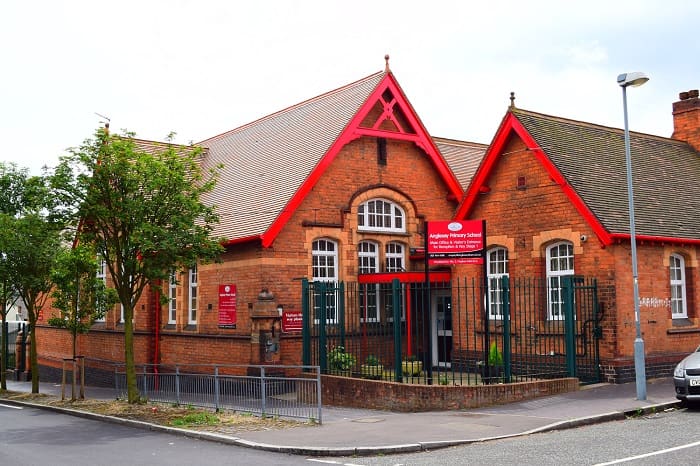British schools and colleges are being asked by the government to step up their planning and policy-making in security guidance that was published last November. The extensive guidance, published by the Department of Education, followed a consultation in 2018.
The government states that, “Your security policy should complement your safeguarding policy, particularly where it puts in place measures to protect students and address the threat of serious violence. It should form part of your suite of policies to ensure the health, safety and well-being of students and staff.
“You should have a competent person or persons to lead in health and safety, and security. This may or may not be the same person. The role will sit alongside the designated safeguarding lead.”
The guidance also states that all staff should be aware of the security policy and senior staff should have “an awareness of relevant security networks and be able to evaluate and assess the impact of any new initiatives on your security policy and its day-to-day operation.”
The security guidance for schools and colleges covers:
- Health and safety law
- Advice on getting started on the security policy and plan
- Identifying internal and external security risks
- Building partnerships with the police, local authority and others in the wider community to gather and share security related information
- Preventative measures – supporting advice and guidance with the government suggesting that plans and procedures already in place in respect of health and safety can be adapted for security issues
- Managing risk
- Adopting a whole school or college approach
- Educating young people on security issues through personal, social and health education
- Testing security plans
- Incident and Emergency planning and management
- Business continuity management
- Staff Training
Alongside the main guidance there is additional information provided for schools and colleges on site security and an overview of potential security threats for schools and preventative measures as well as a series of templates and checklists to help schools and colleges evaluate risks and adopt thorough safety procedures.
The guidance suggests that CCTV can form part of the measures used to prevent security breaches along with integrated access control systems to control, monitor and deny access when necessary and intrusion detection systems.
The government advises schools to consider the security of the perimeter fencing, their buildings and equipment in the school. It is also advised that security lighting should be provided around the perimeter of school buildings with dusk to dawn lighting on all elevations where there is an entrance door. Lighting should be designed to eliminate potential hiding points the guidance states.
All schools, the governments states, should have some degree of access control such as a remote electronic lock release device incorporating an intercom and visual verification. Other entrance points should be kept locked to prevent them being opened from the outside but able to be unlocked from the inside in the event of an emergency.
The guidance states that schools should fit type ‘A’ monitored alarms. These are monitored by a central monitoring station and have the facility for immediate response to any security breaches.
The main areas for coverage of CCTV are entrances, IT suites, offices, locations with little natural surveillance and circulation areas, both inside and out.
Schools, the guidance suggests should be looking to prevent crime which could take the form of:
- arson
- theft
- vandalism
- trespass
- malicious damage
- graffiti
- protest
- kerb crawling/loitering
- drug dealing/drug abuse
- threats from former pupils/residents
- carrying and use of offensive weapons, especially knives
Schools also need to be aware of the threat of terrorism which could most likely take the form of :
- an improvised explosive device
- a gun or knife attack
- a vehicle being used as a weapon
Other security threats identified by the government are cyber security, information security, personal security and chemical and biological threats.
The government has produced a lockdown template to provide guidance on how schools can implement a lockdown procedure. This template states that a lockdown is necessary when children and staff need to be locked within buildings for their own safety i.e. in an emergency situation such as a hostile intruder, terrorist attack or other criminal activity.
The template suggests that staff and pupils can use classrooms, offices, school hall or sports hall for a lockdown. It advises that is important to make sure that items that could be used as weapons, i.e kitchen implements, sports equipment, tools, cleaning products are securely locked away when not in use The template provides an action plan to follow during a lockdown:
- Sound Alert – Activate lock-down procedures immediately
- Dial 999
- Direct all children, staff, parents and signed in visitors to the nearest safe place (this may be dependent on what and where the risk is)
- Secure rooms and take action to increase protection from attack – Lock and barricade doors and windows
- Close windows / blinds
- Turn off the lights, fans or mobile air conditioning units (this will reduce noise and the risk of exposure to any chemical/biological attack)
- Hide, sit on the floor under desks, and away from windows
- Stay as silent as possible – put any mobile devises to silent (consider writing / displaying instructions on whiteboards / TV’s etc as long as it can’t be seen by the intruder)
- Ensure that students, staff and visitors are aware of an exit point in case the intruder does manage to gain access
- If possible, check for missing / injured students, staff and visitors
- Keep doors and windows locked shut and remain inside until an all-clear has been given, or unless told to evacuate by the emergency services
While security systems may seem expensive this guidance indicates that the Department of Education is taking security increasingly seriously. Ecl-ips has extensive experience of providing CCTV systems across the education sector, both within the independent and state sector and on large and small school sites, as these case studies show:
- Chipping Campden School: Designed and installed a new IP CCTV system and integrated existing analogue cameras onto the same platform
- Holy Trinity Catholic School: Installed a lockdown system and upgraded CCTV
- Eglinton Primary School and Early Years Centre: Installed a new IP CCTV system
- Regency High School: Installed new IP cameras and integrated existing Mobotix and Bosch CCTV cameras into a single recording and playback platform
- Arden Academy: Upgraded the school’s CCTV system
- Little Aston Primary School: Installed High Resolution IP CCTV cameras
- Bromsgrove School: Installed HD CCTV cameras to upgrade the school’s security provision
- Anglesey Primary School: Installed HD CCTV cameras
If you want expert advice on CCTV, access control or lockdown systems, and integrating your security provision, Ecl-ips can help so please contact us.



